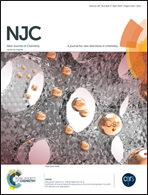Synthesis of Li3V2(PO4)3/C for use as the cathode material in lithium ion batteries using polyvinylidene fluoride as the source of carbon
Abstract
We synthesized two samples of the cathode material Li3V2(PO4)3/C via a solid state method and a hybrid sol–gel method using polyvinylidene fluoride (PVDF) as the source of carbon. Electrochemical testing and XRD, SEM, TEM and EIS were used to characterize their electrochemical performance and micro-morphology. The pyrolitic carbon of the PVDF polymer behaved as a folded film and formed a conductive net that efficiently enhanced the electrochemical performance of the Li3V2(PO4)3. It is easier to coat this pyrolitic carbon on the Li3V2(PO4)3 particles than other types of organic carbon. Compared with the solid state method, the sol–gel method combined with the surfactant cetyl trimethyl ammonium bromide is better at controlling the particle size of the cathode material at the nano-level. The sample prepared by this method showed outstanding rate and cycle performances, with a capacity >90 mA h g−1 at 15 C and a capacity retention of almost 100% after 50 cycles at rate of 5 C at 3.0–4.3 V (theoretical capacity 130 mA h g−1 at 3.0–4.3 V).


 Please wait while we load your content...
Please wait while we load your content...